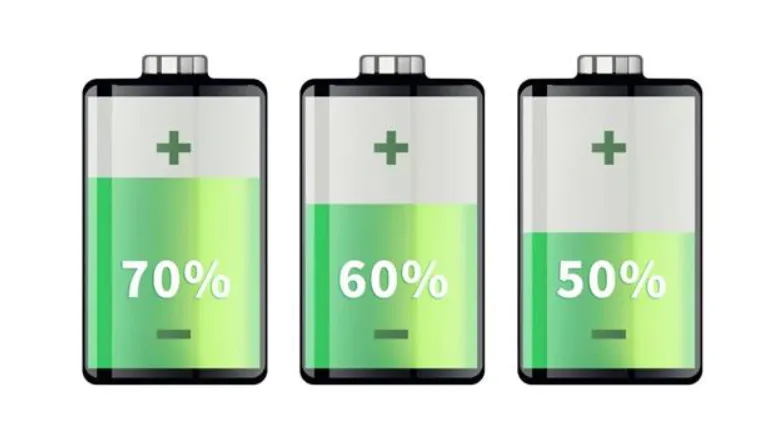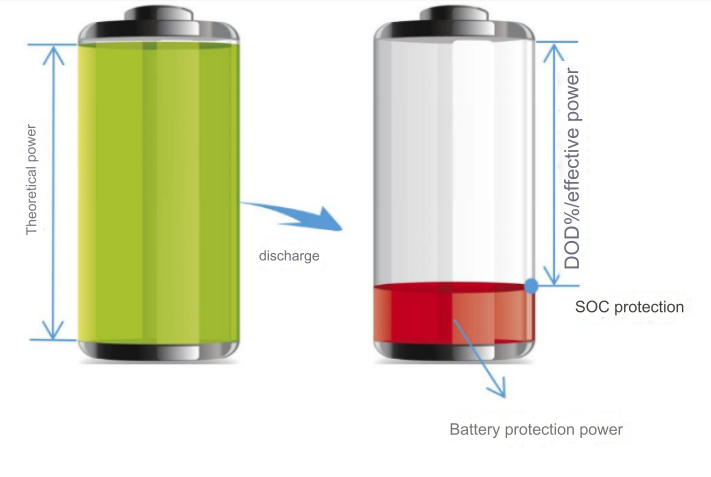Batteries are one of the most important parts of electrochemical energy storage systems . With the reduction of lithium battery costs and the improvement of lithium battery energy density, safety and lifespan, energy storage has also ushered in large-scale applications. This article will help you understand energy storage Several important parameters of the lithium battery.
01
lithium battery capacity
lithium battery capacity is one of the important performance indicators for measuring lithium battery performance. The capacity of a lithium battery is divided into rated capacity and actual capacity. Under certain conditions (discharge rate, temperature, termination voltage, etc.), the amount of electricity released by the lithium battery is called rated capacity (or Nominal capacity). Common units of capacity are mAh and Ah=1000mAh. Taking a 48V, 50Ah lithium battery as an example, the lithium battery capacity is 48V×50Ah=2400Wh, which is 2.4 kilowatt hours.
02
lithium battery discharge C rate
C is used to indicate the lithium battery charge and discharge capacity rate. Charge and discharge rate = charge and discharge current/rated capacity. For example: when a lithium battery with a rated capacity of 100Ah is discharged at 50A, its discharge rate is 0.5C. 1C, 2C, and 0.5C are lithium battery discharge rates, which are a measure of discharge speed. If the used capacity is discharged in 1 hour, it is called 1C discharge; if it is discharged in 2 hours, it is called 1/2=0.5C discharge. Generally, the capacity of the lithium battery can be detected through different discharge currents. For a 24Ah lithium battery, the 1C discharge current is 24A and the 0.5C discharge current is 12A. The larger the discharge current. The discharge time is also shorter. Usually when talking about the scale of an energy storage system, it is expressed by the maximum power of the system/system capacity (KW/KWh). For example, the scale of an energy storage power station is 500KW/1MWh. Here 500KW refers to the maximum charge and discharge of the energy storage system. Power, 1MWh refers to the system capacity of the power station. If the power is discharged with a rated power of 500KW, the capacity of the power station is discharged in 2 hours, and the discharge rate is 0.5C.
03
SOC (State of charge) state of charge
The lithium battery's state of charge in English is State of Charge, or SOC for short. It refers to the ratio of the remaining capacity of the lithium battery after it has been used for a period of time or left unused for a long time and its capacity in the fully charged state. It is usually expressed as a percentage. Simply put, it is the remaining capacity of the lithium battery. power.

04
DOD (Depth of Discharge) depth of discharge
Depth of Discharge (DOD) is used to measure the percentage between lithium battery discharge and lithium battery rated capacity. For the same lithium battery, the set DOD depth is inversely proportional to the lithium battery cycle life. The deeper the discharge depth, the shorter the lithium battery cycle life. Therefore, it is important to balance the required runtime of the lithium battery with the need to extend lithium battery cycle life.
If the change in SOC from completely empty to fully charged is recorded as 0~100%, then in practical applications, it is best to make each lithium battery work in the range of 10%~90%, and it is possible to operate below 10%. It will be over-discharged and some irreversible chemical reactions will occur, which will affect the lithium battery life.

05
SOH (State of Health) lithium battery health status
SOH (State of Health) indicates the current lithium battery's ability to store electrical energy relative to a new lithium battery. It refers to the ratio of the current lithium battery's full-charge energy to the new lithium battery's full-charge energy. The current definition of SOH is mainly reflected in several aspects such as capacity, electricity, internal resistance, cycle times and peak power. Energy and capacity are the most widely used.
Generally, when the lithium battery capacity (SOH) drops to about 70% to 80%, it can be considered to have reached EOL (end of lithium battery life). SOH is an indicator that describes the current health status of the lithium battery, while EOL indicates that the lithium battery has reached the end of life. Needs to be replaced. By monitoring the SOH value, the time for the lithium battery to reach EOL can be predicted and corresponding maintenance and management can be performed.
Post time: May-08-2024








